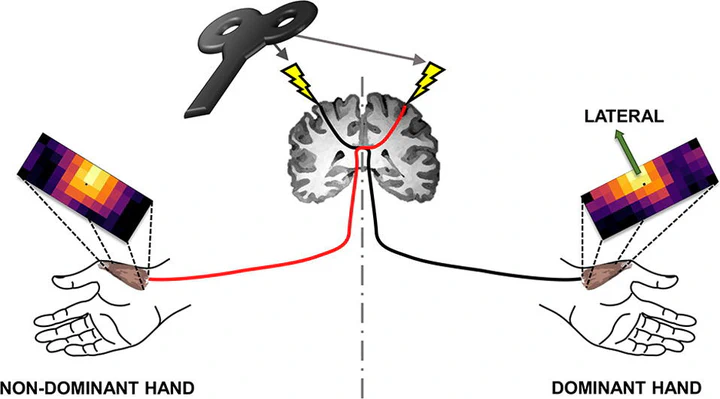Lateralized asymmetries in distribution of muscular evoked responses: An evidence of specialized motor control over an intrinsic hand muscle
 Graphical abstract
Graphical abstract
Abstract
Non-invasive functional brain techniques are becoming increasingly important to foster important advances in neurosciences. Transcranial magnetic stimulation (TMS) is one possibility whose applications have been spreading to several areas of neuroscience. By producing high intensity magnetic flux changes TMS is able to depolarize neurons thus eliciting brain or nerve responses. However, the ability to focus the magnetic pulse to small areas is limited and the stimulus is usually restricted to cortical areas. To further improve TMS performance, new coil design will be necessary as well as methods to quickly map the 3D produced magnetic field vector. Magnetic resonance imaging (MRI) was used in this work to map the magnetic field produced by a TMS butterfly coil. Measurements were performed in vitro and in vivo. The reliability of the results suggests the use of MRI to produce magnetic field mapping, in conjunction with other techniques, to develop TMS coils for different purposes.